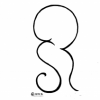-
Posts
550 -
Joined
-
Last visited

doc replied to johnnie's topic in Power Hammers, Treadle Hammers, Olivers

doc replied to FieryFurnace's topic in Copper Alloys

doc replied to fordmustangbrad's topic in Anvils, Swage Blocks, and Mandrels

doc replied to Scrap rat's topic in Power Hammers, Treadle Hammers, Olivers

doc replied to Scrap rat's topic in Power Hammers, Treadle Hammers, Olivers

doc replied to oldanvilyoungsmith's topic in Power Hammers, Treadle Hammers, Olivers
